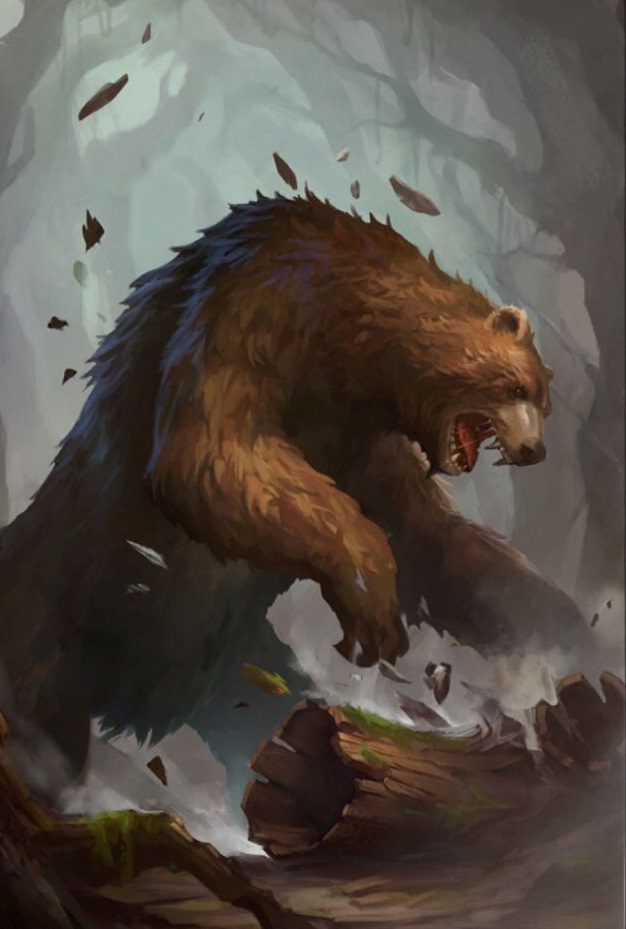Cave Bear
| Species | bear |
| No. Appearing | 1–3 |
| Behaviour | subsocial |
| Range | subterannean |
| Size | 4½ ft. at withers; stands 12 ft. tall |
| Weight | 1,500 lbs. |
| Intelligence | 2 |
| Armour Class | 5 |
| Hit Dice | 7+6 |
| Action Points | 6 |
| Max. Stride | {{{stride}}} |
| THAC0 | 14 |
| Hp/Die | d12 |
| Attack Forms | claw/claw, bite |
| Damage | 2–12/2–12, 5–20 |
| Special Attacks | maul |
An immense bear that prefers to dwell in watery caves with stocks of fish and other creatures that can serve as prey. The cave bear rarely emerges from its subterranean environment, and then only at night. It is intensively aggressive, being far more likely to view humanoids as prey than would a black or brown bear. Cave bears are entirely carnivorous.
The number occurring will indicate a single male bear, a mated pair or a pair with a single offspring. Cave bears hibernate only in subterranean regions that grow cold enough to freeze through during the winter. Many dungeons, of course, are deep enough to allow the bear to descend during the winter months, to deeper lake and river-filled chambers, where they will feed on a wide variety of water-dwelling and wandering monsters.
A cave bear will focus its claw attacks on a single defender, but may attack a separate person with its bite. If both the claws hit a defender, this will indicate that the bear has gotten a hold of the defender and will now maul for 3–18 additional points of damage. Following the mauling, the bear will release the defender, but may attack that individual again the following round.
Encounters
- Hunting: cave bears will roam cavern areas and underground ponds seeking food, often surprising a patrol or aggressively attacking much larger prey. If encountered when hunting, a cave bear will attack indiscriminately without warning. It will not back off unless wounded.
- Hibernating: cave bears may sleep for 2–3 weeks at any time of the year, after finding particularly large prey or when food is scarce. Usually they will move on to another part of the cave after sleeping. They will often move far afield for months before returning to a known den again and again. If disturbed (rustling armor will be enough), the bear will wake up easily and will attack aggressively, often fighting to the death rather than giving ground.
- Rampaging: occasionally cave bears will go mad with bloodlust (often due to disease or contamination, which will affect a mated pair), roaming the halls and killing without purpose, always moving towards areas with the highest amount of potential prey. Normally, a cave bear would avoid a large humanoid lair, but when rampaging the bear will simply rush in and fight until the death. While very unusual, a single cave bear can cause a great deal of damage. With mated pairs, one will often kill the other, an act that will often draw attention, for the chance of killing the survivor (that will be reduced in hit points following the battle) and fresh meat. Rampaging cave bears will attack with +2 to hit and +3 damage until dead.
- Sated: having eaten their fill, cave bears can become passive and indifferent to interlopers, allowing them to pass by without incident. This is very unusual as well, and most times their will be evidence of the satiety (many half-eaten corpses or one immense one). Sated cave bears will not be found in their lairs.
See Bestiary.
